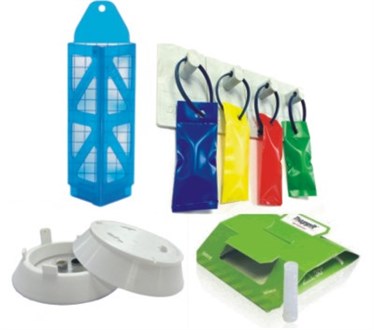At its meeting held on 12 May 2017, the European Commission backed down on its proposal to classify the pheromones contained within insect monitoring traps as biocides.
This decision is good news for the industry. Should this proposal have gone ahead it would effectively have removed from the market all the monitoring traps that actually work. The costs involved in progressing them through all the required regulatory hoops would have been just too high to make it an economic proposition for any of companies that have developed them.
| The industry across Europe was requested to make their views known before the proposal was due for discussion at the Standing Committee on Biocidal Products, part of the European Commission’s Directorate General for Health and Food Safety between 10, 11 and 12 May. It would appear this strategy has worked and the regulators did listen. The Committee agreed to abandon the project of making an EU decision on monitoring traps with attractants, but opted for a Member State by Member State evaluation/decision instead. However, the Confederation of European Pest Management Associations (CEPA) advises that national associations will need to remain vigilant regarding this issue by staying in touch and getting updates from their own national regulators. |
|
|
| The wording of this announcement from Garry Wiles of the International Chemicals Unit of the Health & Safety Executive, Chemicals Regulation Division based in London is as follows:
“You contacted the HSE about the 12 May discussions at the Standing Committee on Biocidal Products on a proposal for an EU Commission decision on the status under Article 3(3) of the EU Biocidal Products Regulation 528/2012 (BPR), whether monitoring traps using an attractant were biocidal products. I am writing to let you know the outcome of the discussion, and have also copied this message to your copy recipients where I have an email address. Please feel free to copy this to anyone else you think needs to know. The Commission advised the meeting that it would not take a decision on monitoring traps under Article 3(3), and that this would be left to each Member State to decide on a case by case basis and take control measures as appropriate (for example, to check that products are labelled appropriately). The Commission explained that this approach takes into account recital 18 and Article 3(3) of the BPR and the outcome of the Sá¶ll Court case on the definition of a biocidal product, which they considered together clarify that the Commission may (rather than should, or must) take a decision under Article 3(3). It was not clear from the discussion why the Commission cited recital 18 in this context, but we will await to see whether the minutes of the meeting provide any further clarity. Of course, this approach raises concern about uncertainty for stakeholders, and HSE will be considering within the next month the UK position and we will write to you again (and also update the HSE website) setting out the position on monitoring traps in general, which we can then apply to specific cases when they are brought to our attention. For the two traps specified in the Commission’s draft proposal, there was no suggestion they were being supplied in the UK and in fact the labels seen by HSE were not in English. Meanwhile, the position previously established under the Biocidal Products Directive 98/8/EC (BPD) – that traps purely for monitoring purposes to assess the necessity or success of pest management measures, clearly labelled, sold and used as such, are not within scope – will remain the UK position whilst we consider this further.” |
||


